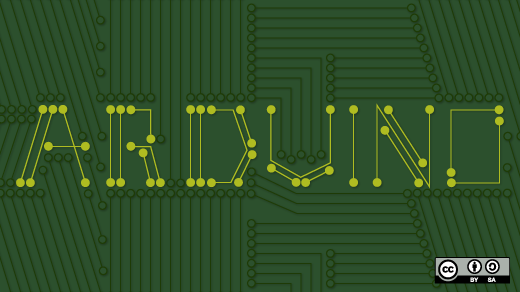At Open Source Junction 4 we invited attendees to present their hardware projects. Some were open source hardware, while some used consumer hardware components in conjunction with open source software to provide an innovative solution to a problem.
ColorHug
Richard Hughes is the creator of ColorHug, an open source colorimeter. These devices measure the colour coming from your screen and create a colour profile allowing you to ensure that colours look the same across all devices. This means that a photo taken and viewed on your DSLR camera will look the same when being touched up on your laptop, and when being shown to friends on your TV.

One of the initial concerns to Richard was infringing patents of competing devices. To avoid this, he kept his device as simple as possible—the less technically novel the device, the less chance someone else had patented a method it used. The simplicity of the device and components could be made up for using more complex software.
Once he had a working prototype, Richard set up a website to announce the device and start taking orders. He hoped that he would sell a dozen or so. Before long he had several hundred orders.
Financing production at this scale proved difficult. Richard attempted to get a bank loan, but because his device was open source, the bank felt it was too much of a risk. He decided to fund the first 50 units himself, using the profit to fund the next batch of 100, and so on.
As production scaled up, Richard found new ways of creating efficiencies.
Holes in the case were initially made using a Dremel multitool and a template. However, before long the hole in the template became enlarged and had to be replaced. This process was replaced with a punch tool, which was faster and more durable.
The ColorHug circuit boards were initially printed in China and hand-soldered by Richard, who has past experience with surface-mount soldering. However, the cheap boards had a high defect rate, and resulted in a lot of wastage.
As the production process evolved, Richard moved the circuit board manufacture to the UK, and paid for them to be tested at production. This created a higher unit cost but dramatically reduced wastage, creating savings overall.
After soldering 50 units himself, Richard sought out an alternative. He looked for companies to provide a pick-and-place process for the surface mount components. Initially looking to Eastern Europe, he found companies were only willing to deal with orders far in excess of what he needed. Again, the answer was found closer to home, with a UK factory willing to satisfy smaller orders in exchange for an initial set-up fee.
If you’re interested in the ColorHug, you can buy one (or download the designs, firmware and build your own) from https://hughski.com.
panStamp
Paolo Di Prodi of Robomotic introduced us to the panStamp, small Arduino-compatible boards that communicate wirelessly over an RF protocol called Simple Wireless Abstract Protocol (SWAP). PanStamps can be connected to various sensors and consume very little power, allowing them to operate on a single AA battery.

A network of panStamps can be used to measure all aspects of an environment such as temperature, air quality, noise levels, light levels, and report readings back to a base system.
A panStamp network is managed using Lagarto, a python-based device management interface for SWAP. From here, sensor readings can be read, recorded, published, and used to trigger events. A reading from one panStamp can even be used to activate another panStamp in the network.
The panStamp site features technical details and source code for the system. Paolo admitted that he was initially sceptical about the open source model, but concluded that if your device is copied, it’s because you’re doing something right.
Remote Care Package
Kevin Safford is a technical writer for IBM by day. When his mother was diagnosed with Alzheimer’s, she was keen to maintain her independence. With Kevin living some distance from her, he wanted to provide her with a system that allowed her to live independently where possible, while providing him with peace of mind.
Kevin designed an unobtrusive computer system for his mum which could be administered remotely. The hardware he chose was a DreamPlug connected to a USB touch-screen. The software from the operating system to the applications is entirely open source.
When Kevin wants to speak to his mother, he uses VNC to log into her computer remotely. From here he can initiate a video call to himself, allowing it to ring until she is ready, when he answers at his end. Being able to see one another gives both parties reassurance.
Between calls, Kevin uses the computer to provide his mother with reminders and stimuli. Using cron jobs and structured text files, he can display a daily list of events to ensure his mother knows what she’s doing, and what she needs to remember. He can also schedule the system to play her music or show her photos, which provide a source of entertainment and stimulus.
Details of Kevin’s system including the scripts he uses can be found on his Google Code site.
Stellar Computer System
Richard Melville works for Cellularity Ltd. who produces the Stellar Computer System, a system of modular desktop computers which can operate independently, or be clustered together to provide a distributed and robust platform.
The Stellar system is built entirely from consumer components. The form factor is small enough to be mounted on the back of a computer monitor. The components are passively cooled and the storage is solid state, creating a low-power, silent device.
The power requirements are low enough for the machine to run from a 12V battery. This can be connected to a mains charger to provide a long life UPS-style set-up, or even to a small wind turbine.
The device is designed to be modular—if the operating system fails, the device it is stored on can be swapped out for another, leaving the user data (stored separately) intact. The case is tool-less, allowing most components to be replaced by hand.
Cellularity Ltd. is currently working with Basho to implement the Riak distributed database on a cluster of Stellar machines. This setup would allow user data to be distributed across the cluster, meaning a machine could fail completely and be replaced with no loss of data.
You can find our more about the Stellar Computing System on their WordPress site.
Cellular Automata
Adam Cooper has been spending his spare time building hardware cellular automata. If you’ve ever seen Conway’s Game of Life and similar simulations you’ll be familiar with the concepts—an array of cells activate, stay active and deactivate in response to those around them, based on a pre-defined rule set.

Adam’s project takes this idea into the real world. His idea was to design a low-cost device (about £6 for a board an the required components) which would allow year 9-age school pupils to build physical automata. With a yeargroup building a set of devices, a large array of cells could be created.
The project is currently at the prototyping stage, with the first 5 boards built and functioning. The boards feature LEDs which allow them to signal an active state, and light sensors to detect the state of surrounding cells.
Adam’s plan is to get sponsorship for the boards to be built at his daughter’s school, and that the project will help promote interest in STEM subjects.
Once again, OSS Watch would like to thank everyone who presented at Open Source Junction 4.
This post contains photos by Wolfgang Lonien, Andi Sidwell, and Flickr user jabstarr.
Syndicated from the OSS Watch blog. Copyright in the original work is assigned to the University of Oxford.







Comments are closed.